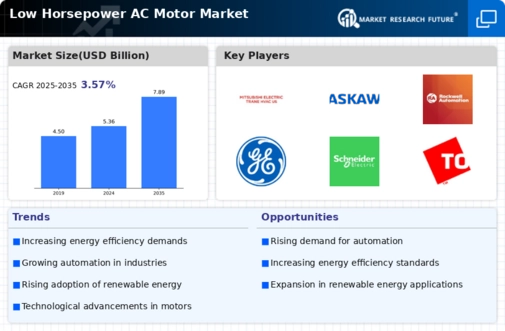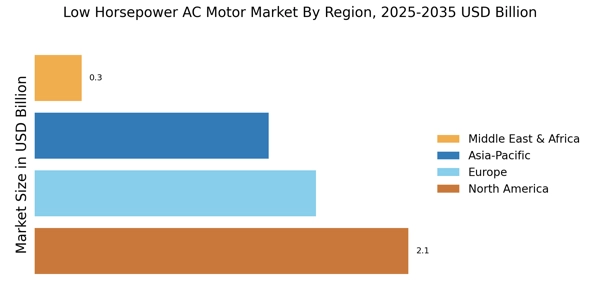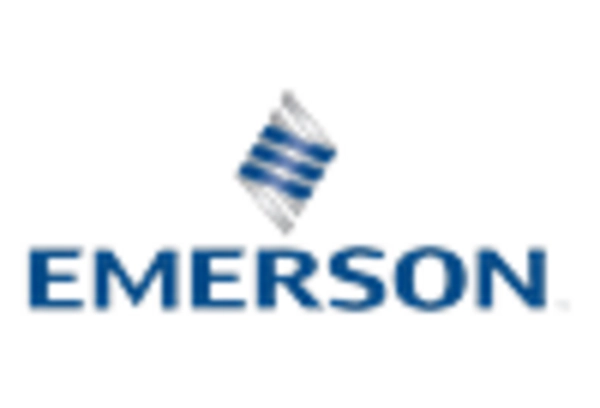Industrial Automation Trends
The Low Horsepower AC Motor Market is significantly influenced by the ongoing trends in industrial automation. As industries increasingly adopt automated processes to enhance productivity and reduce labor costs, the demand for low horsepower AC motors is expected to rise. These motors are integral to various automated systems, including conveyor belts, robotics, and assembly lines. Market analysis suggests that the industrial automation sector could contribute to a growth rate of around 10% in the low horsepower AC motor market over the next few years. This trend indicates a shift towards more sophisticated manufacturing processes, where low horsepower AC motors play a crucial role in achieving operational efficiency.
Energy Efficiency Regulations
The Low Horsepower AC Motor Market is experiencing a notable shift due to stringent energy efficiency regulations imposed by various governments. These regulations aim to reduce energy consumption and greenhouse gas emissions, thereby promoting the adoption of energy-efficient motors. As a result, manufacturers are increasingly focusing on developing low horsepower AC motors that comply with these standards. The market is projected to grow as industries seek to upgrade their existing systems to meet regulatory requirements. In fact, the demand for energy-efficient motors is expected to rise significantly, with estimates suggesting a potential increase of 20% in market size over the next five years. This trend not only enhances operational efficiency but also aligns with global sustainability goals.
Growing Demand in HVAC Systems
The Low Horsepower AC Motor Market is witnessing a surge in demand driven by the increasing use of low horsepower AC motors in heating, ventilation, and air conditioning (HVAC) systems. As urbanization continues to expand, the need for efficient HVAC solutions becomes paramount. Low horsepower AC motors are favored for their ability to provide reliable performance while consuming less energy. Market data indicates that the HVAC sector accounts for a substantial share of the low horsepower AC motor market, with projections estimating a growth rate of approximately 15% annually. This trend is likely to persist as consumers and businesses alike prioritize energy efficiency and cost savings in their HVAC systems.
Technological Innovations in Motor Design
The Low Horsepower AC Motor Market is experiencing a wave of technological innovations that are enhancing motor design and performance. Advances in materials, control systems, and manufacturing processes are enabling the development of more efficient and reliable low horsepower AC motors. These innovations not only improve energy efficiency but also extend the lifespan of motors, making them more appealing to consumers. Market trends indicate that the introduction of smart motor technologies, which allow for better monitoring and control, is likely to drive further growth in the low horsepower AC motor market. As industries seek to optimize their operations, the demand for technologically advanced motors is expected to increase, potentially leading to a market growth rate of around 8% in the coming years.
Rising Adoption in Renewable Energy Applications
The Low Horsepower AC Motor Market is benefiting from the rising adoption of renewable energy applications. As the world shifts towards sustainable energy sources, low horsepower AC motors are increasingly utilized in wind turbines, solar energy systems, and other renewable technologies. This transition is driven by the need for efficient energy conversion and management in renewable energy systems. Market data suggests that the renewable energy sector is poised for substantial growth, with low horsepower AC motors playing a pivotal role in this transformation. The anticipated increase in renewable energy investments could lead to a market expansion of approximately 12% in the low horsepower AC motor segment over the next five years.


















Leave a Comment